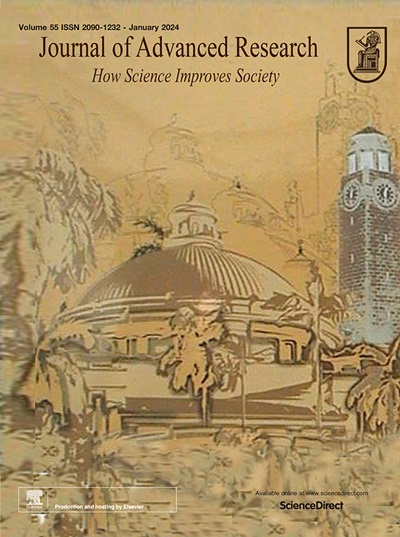医用血浆诱导糖尿病小鼠伤口愈合过程中的 YAP/TAZ、β-catenin 和 TGFb 通路活化
IF 11.4
1区 综合性期刊
Q1 MULTIDISCIPLINARY SCIENCES
引用次数: 0
摘要
引言Hippo是一种信号通路,在进化过程中保持不变,并在伤口愈合和组织再生中发挥关键作用。Hippo相关因子、"是 "相关蛋白(YAP)和具有PDZ结合基调的转录共激活因子(TAZ)的转录活性被破坏与心血管疾病、纤维化和癌症有关。这使得 Hippo 通路成为一个有吸引力的治疗干预目标:先前的研究表明,医用气体等离子体通过向受影响区域直接输送活性物种组合来促进伤口愈合。然而,YAP/TAZ 和其他信号通路在糖尿病伤口愈合中的参与仍有待探索:为此,在链脲佐菌素(STZ)诱导的糖尿病小鼠耳部产生伤口并用气体血浆处理。雌性和雄性小鼠在两个伤口愈合阶段(伤口愈合后第 9 天和第 20 天)进行了转录组分析。此外,我们还利用免疫组织学和化学染色对各种靶点进行了基因和蛋白质表达分析,并进行了定量 PCR 和 Western 印迹分析:结果:气血浆治疗通过增加再上皮化和改变细胞外基质成分加速了愈合。转录组图谱显示了血浆处理后基因表达的主要变化,随后使用转录和翻译定量以及定位分析对几个靶点进行了验证:我们的研究评估了血浆处理后对Hippo及相关通路(如YAP/TAZ、β-catenin、肿瘤生长因子β和氧化应激信号转导)重要靶点的细胞调控。激活基因、通路及其调控因子是利用医用气体等离子体治疗干预糖尿病真皮皮肤修复的一个有吸引力的治疗目标。本文章由计算机程序翻译,如有差异,请以英文原文为准。
YAP/TAZ, beta-catenin, and TGFb pathway activation in medical plasma-induced wound healing in diabetic mice
Introduction
Hippo is a signaling pathway that is evolutionarily conserved and plays critical roles in wound healing and tissue regeneration. Disruption of the transcriptional activity of both Hippo-associated factors, the yes-associated protein (YAP), and the transcriptional co-activator with PDZ binding motif (TAZ) has been associated with cardiovascular diseases, fibrosis, and cancer. This makes the Hippo pathway an appealing target for therapeutic interventions.
Objectives
Prior research has indicated that medical gas plasma promotes wound healing by delivering a combination of reactive species directly to the affected areas. However, the involvement of YAP/TAZ and other signaling pathways in diabetic wound healing remains unexplored.
Methods
To this extent, ear wounds were generated and treated with gas plasma in streptozotocin (STZ)-induced diabetic mice. Transcriptome profiling at two wound healing stages (days 9 and 20 post-wounding) was performed in female and male mice. Additionally, we employed gene and protein expression analyses, utilizing immunohistological and −chemical staining of various targets as well as quantitative PCR and Western blot analysis.
Results
Gas plasma treatment accelerated healing by increasing re-epithelialization and modifying extracellular matrix components. Transcriptomic profiling charting the major alterations in gene expression following plasma treatment was followed by a validation of several targets using transcriptional and translational quantification as well as localization analyses.
Conclusion
Our study evaluated the cellular regulation of essential targets of the Hippo and related pathways such as YAP/TAZ, β-catenin, tumor growth factor β, and oxidative stress signaling after plasma treatment. The activation of genes, pathways, and their regulators is an attractive therapeutic aim for a therapeutic intervention in dermal skin repair in diabetic diseases using medical gas plasmas.
求助全文
通过发布文献求助,成功后即可免费获取论文全文。
去求助
来源期刊

Journal of Advanced Research
Multidisciplinary-Multidisciplinary
CiteScore
21.60
自引率
0.90%
发文量
280
审稿时长
12 weeks
期刊介绍:
Journal of Advanced Research (J. Adv. Res.) is an applied/natural sciences, peer-reviewed journal that focuses on interdisciplinary research. The journal aims to contribute to applied research and knowledge worldwide through the publication of original and high-quality research articles in the fields of Medicine, Pharmaceutical Sciences, Dentistry, Physical Therapy, Veterinary Medicine, and Basic and Biological Sciences.
The following abstracting and indexing services cover the Journal of Advanced Research: PubMed/Medline, Essential Science Indicators, Web of Science, Scopus, PubMed Central, PubMed, Science Citation Index Expanded, Directory of Open Access Journals (DOAJ), and INSPEC.
 求助内容:
求助内容: 应助结果提醒方式:
应助结果提醒方式:


